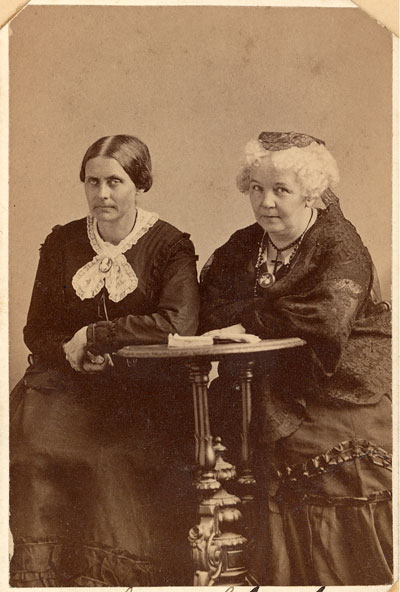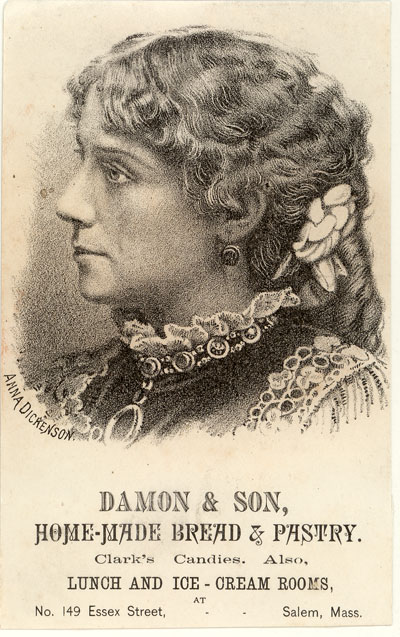Difference between revisions of "Wilson Collection: Susan B. Anthony"
(Susan B. Anthony) |
(Susan B. Anthony) |
||
| (2 intermediate revisions by the same user not shown) | |||
| Line 4: | Line 4: | ||
''(Photograph, circa 1871, of suffrage-leaders Susan B. Anthony and white-haired Elizabeth Cady Stanton, and advertisement showing Anna Dickenson [sic])'' | ''(Photograph, circa 1871, of suffrage-leaders Susan B. Anthony and white-haired Elizabeth Cady Stanton, and advertisement showing Anna Dickenson [sic])'' | ||
| − | |||
| − | |||
'''Susan B. Anthony''' | '''Susan B. Anthony''' | ||
| Line 15: | Line 13: | ||
==''References''== | ==''References''== | ||
<references /> | <references /> | ||
| + | |||
| + | |||
| + | |||
| + | ==''To return to "Exhibit contents" links, click:''== | ||
| + | ==[[Rich Wilson: Aspects of Queer Existence in 19th-Century America]]== | ||
Latest revision as of 11:17, 26 November 2012
(Photograph, circa 1871, of suffrage-leaders Susan B. Anthony and white-haired Elizabeth Cady Stanton, and advertisement showing Anna Dickenson [sic])
Susan B. Anthony
Letters between Susan B. Anthony and popular public speaker Anna Dickinson echo the, even flirtatious, relationship Anthony had with suffragists she mentored. With Dickinson she desires “to snuggle...closer than ever” with her “Chicky Dicky Darlint.”[1] Her bed is “big enough and good enough to take” Anna in.[2] In turn, Dickinson reveals to Anthony a longing “to hold your hand in mine, to hear your voice, in a word, I want you.”[3]
Anthony declared she “never found the man who was necessary to my happiness.”[4] In later life, she companioned with Emily Gross, a wealthy Chicago businessman’s wife. Anthony wrote of her intention to “call in Chicago--at my new lover’s--Mrs. Gross--48 Lake Shore Drive.”[5] After Anthony’s death, a mutual friend revealed, “Times are very hard with dear Mrs. Gross I fear.”[6]
References

